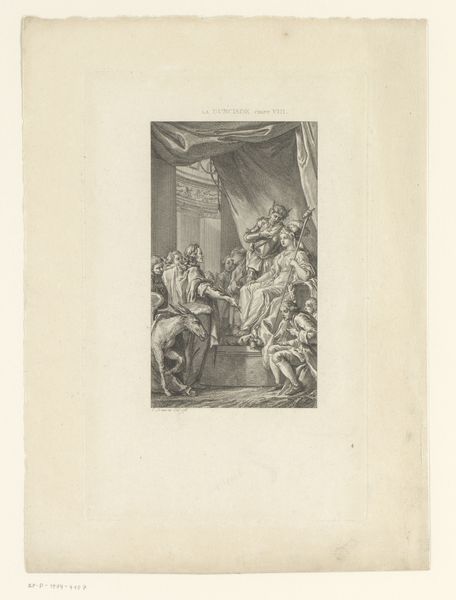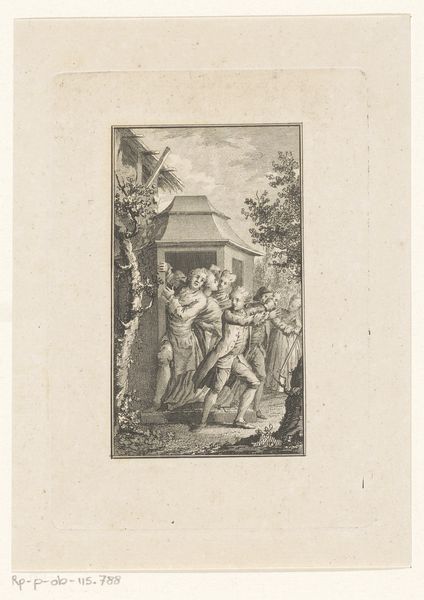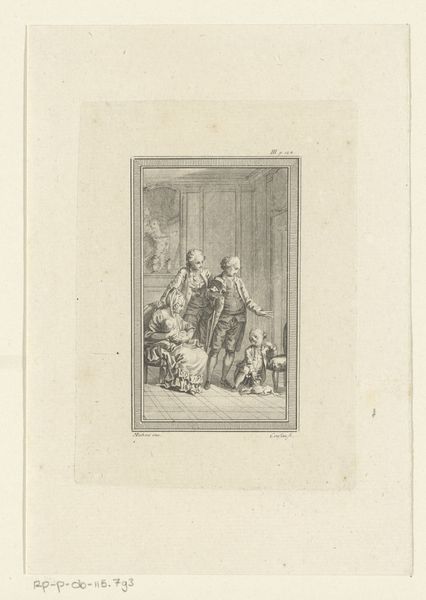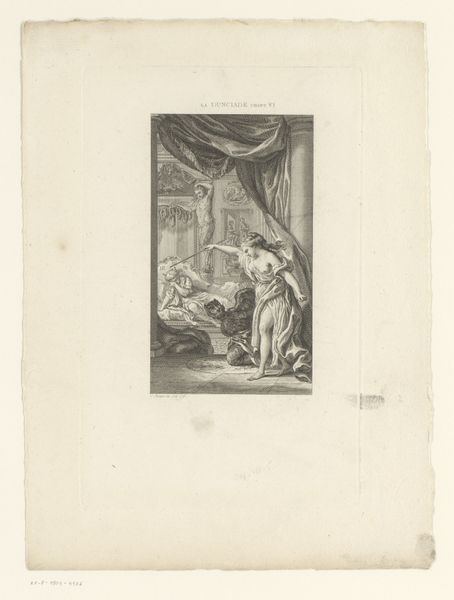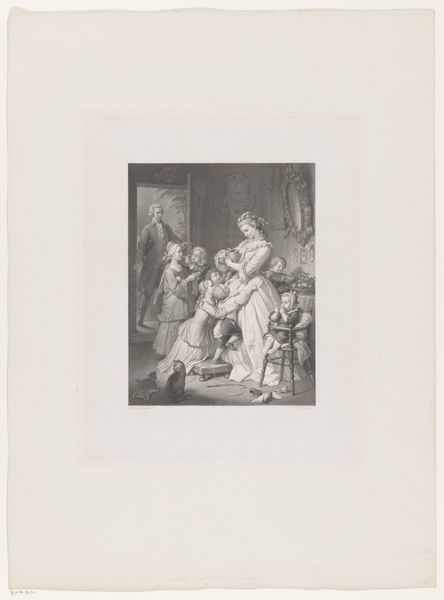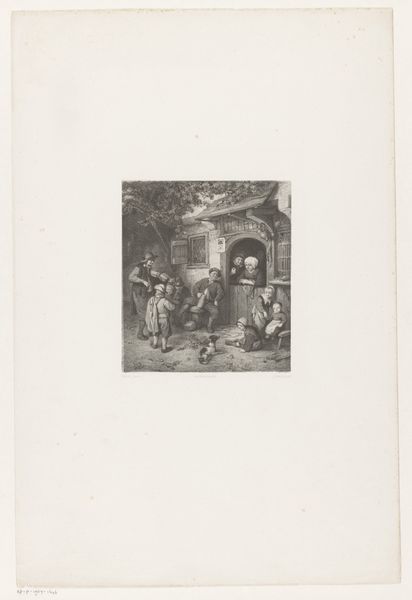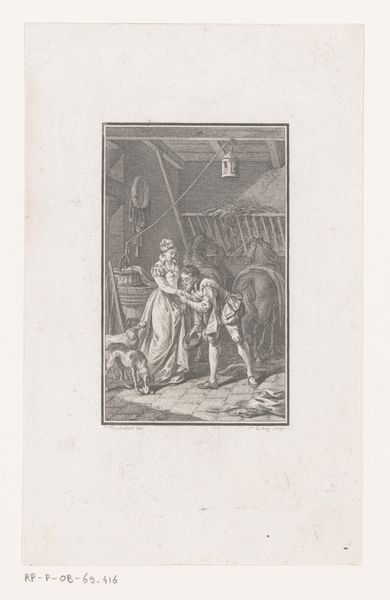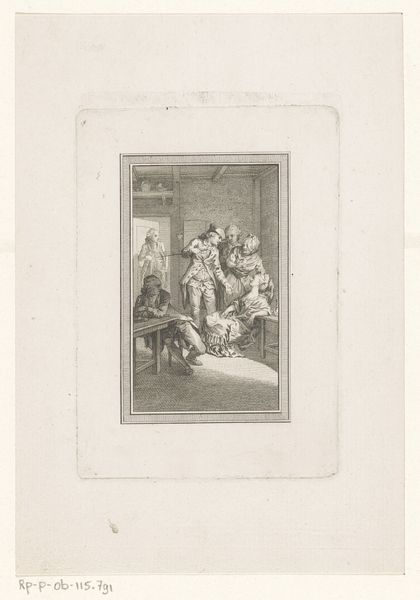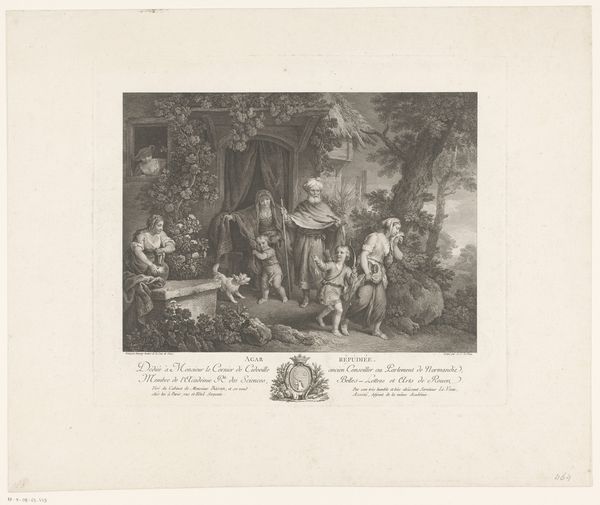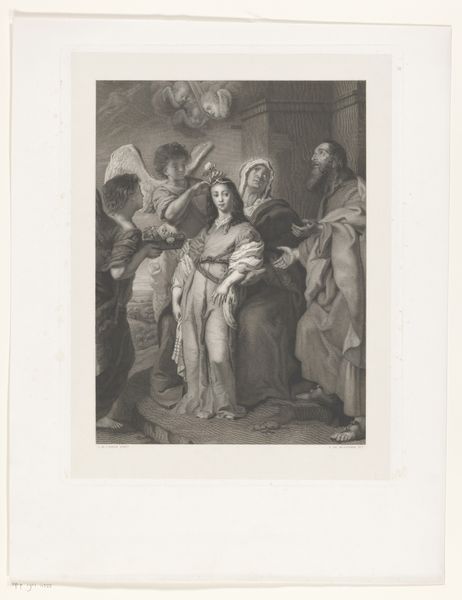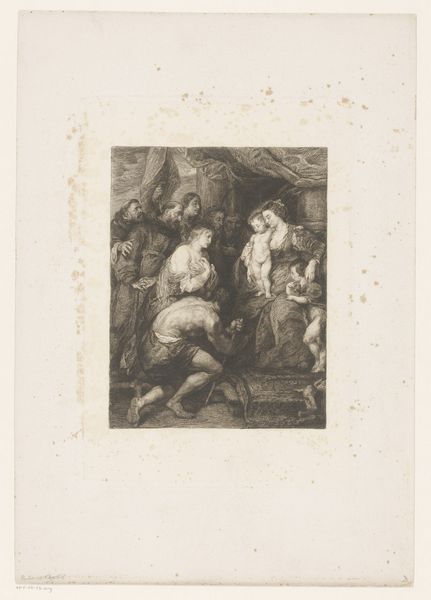
Vioolspelende muzikant voor een huis met luisterende figuren c. 1776
0:00
0:00
jacquesphilippelebas
Rijksmuseum
Dimensions: height 262 mm, width 205 mm
Copyright: Rijks Museum: Open Domain
Editor: So, this engraving, “Vioolspelende muzikant voor een huis met luisterende figuren” or "Violin Player in Front of a House with Listening Figures," was created around 1776 by Jacques Philippe Le Bas. It's currently housed in the Rijksmuseum. What strikes me is the expressions on the faces of the listeners - almost as if they're in a trance! What do you make of the symbolism at play here? Curator: The figures clustered around the musician resonate with deep-seated archetypes. Music, universally, acts as a conduit – a pathway to shared emotion and experience. Note how the light seems to emanate from the figures themselves, rather than a specific light source. Editor: I do see that now, their faces are quite luminous. Does this relate to any period-specific beliefs about music? Curator: Indeed. Consider the role of music in 18th-century society. It wasn't just entertainment; it was seen as a moral force, capable of elevating the soul, or, conversely, of inciting passions. Think of the flute as representing peace or harmony; the drum, war or excitement. What symbols do *you* detect beyond the explicit? Editor: Hmm… The fact that they’re listening in front of a home...Perhaps the home symbolizes hearth and family, amplified or transported through music? Curator: Precisely! It speaks to music's role in binding communities, solidifying shared identity through auditory experience and triggering powerful, collective emotions. Do you feel the expressions suggest unity or discord among them? Editor: I would lean towards unity…they're so fixated, almost reverent. Curator: Agreed. It's a potent visual encapsulation of cultural memory, a testament to the enduring power of music to shape individual and collective psyches. Thanks for bringing that reading to life for me!
Comments
No comments
Be the first to comment and join the conversation on the ultimate creative platform.
